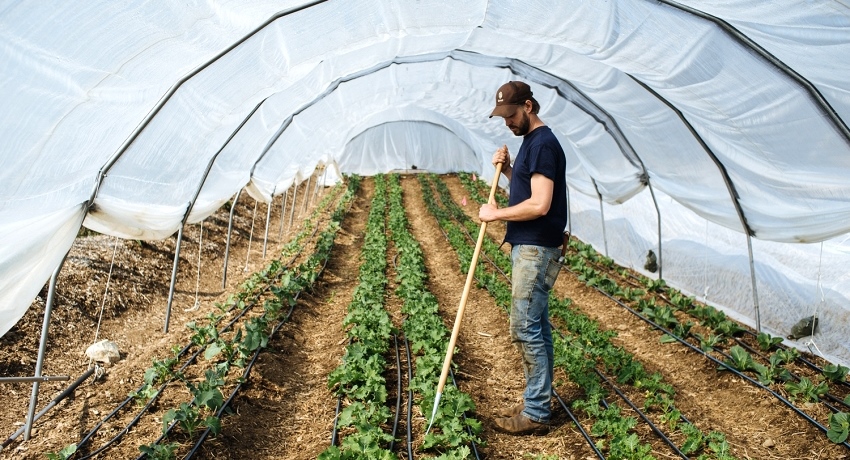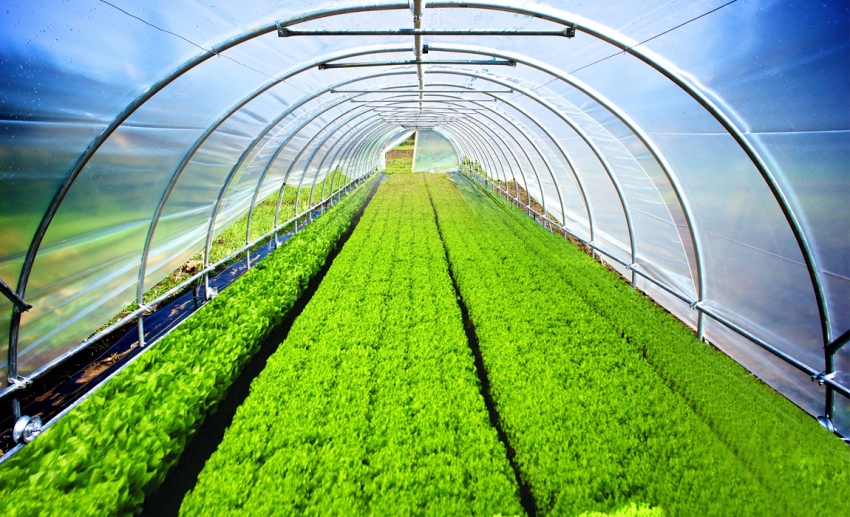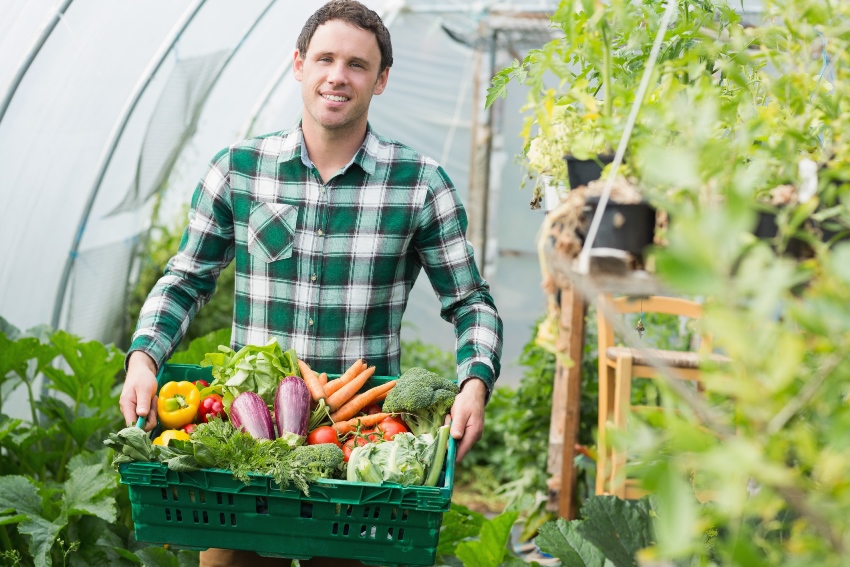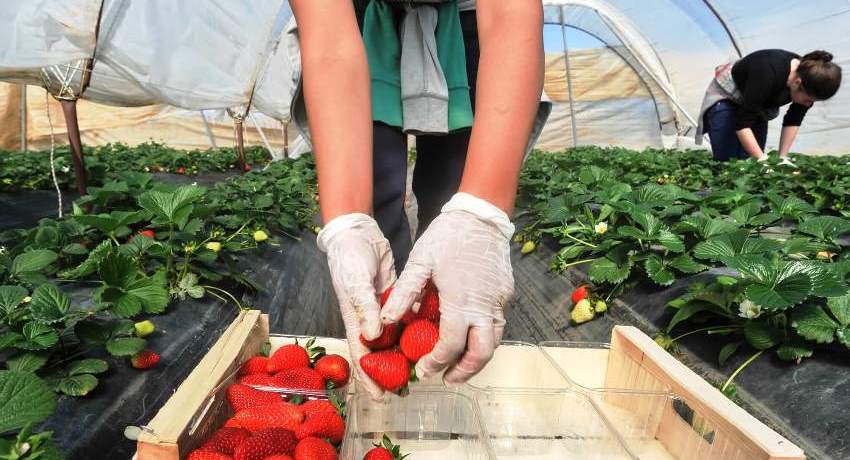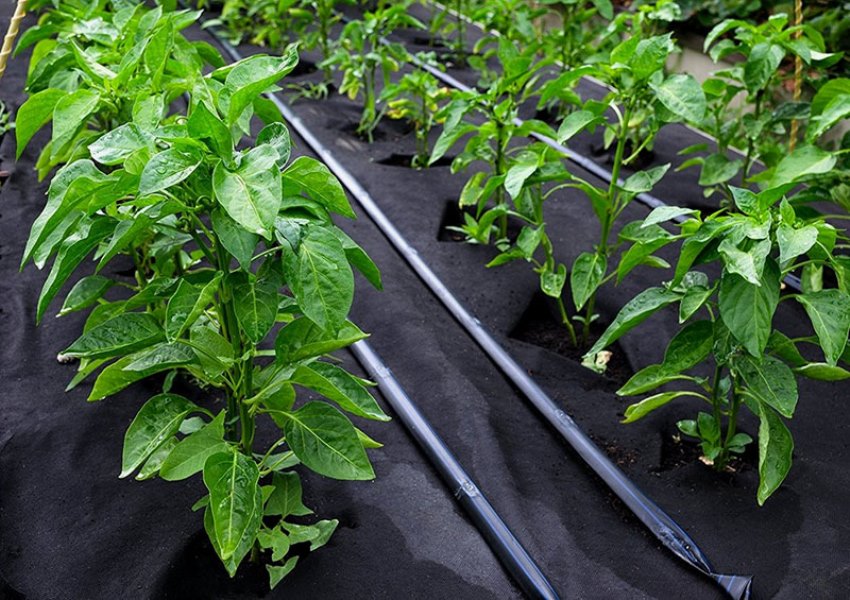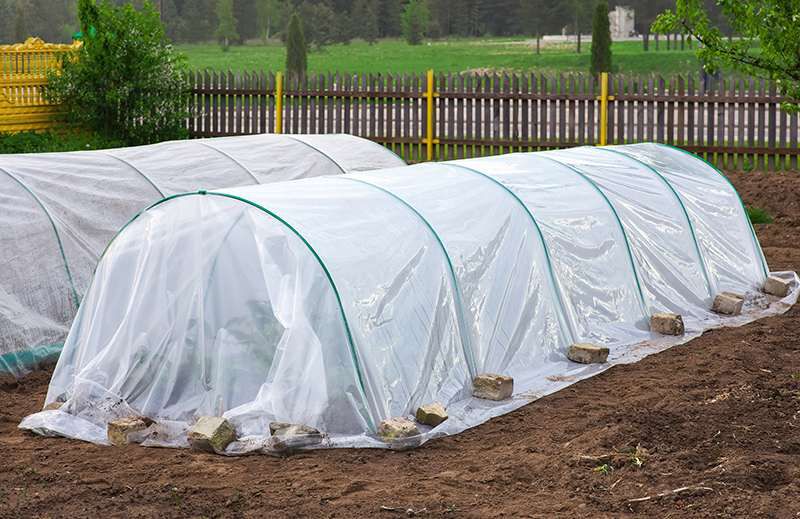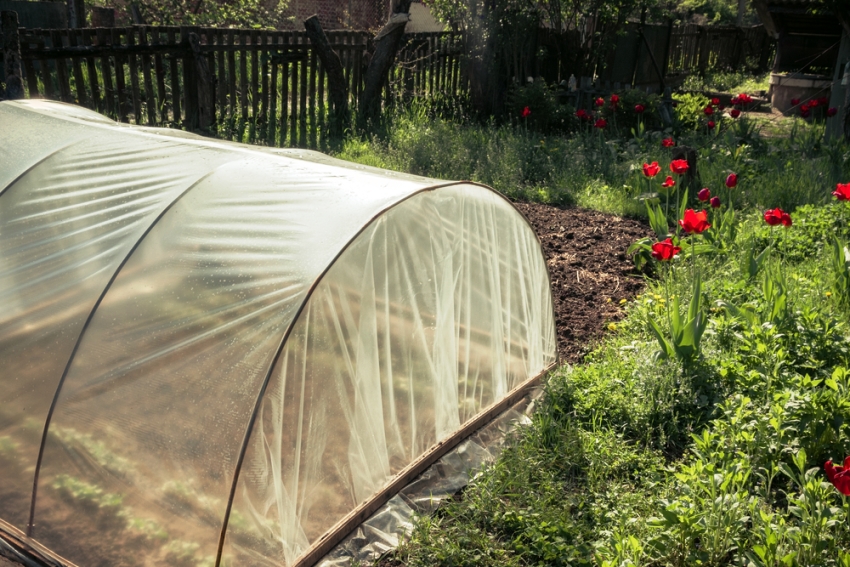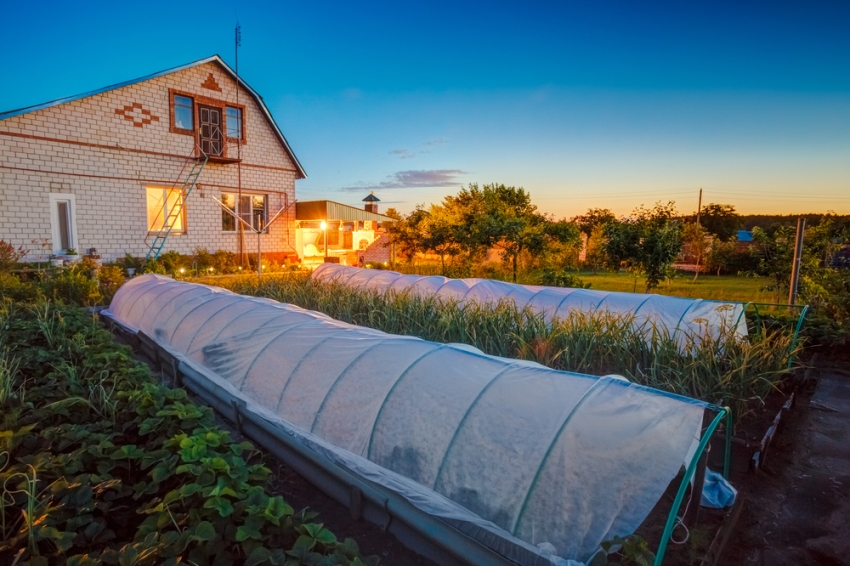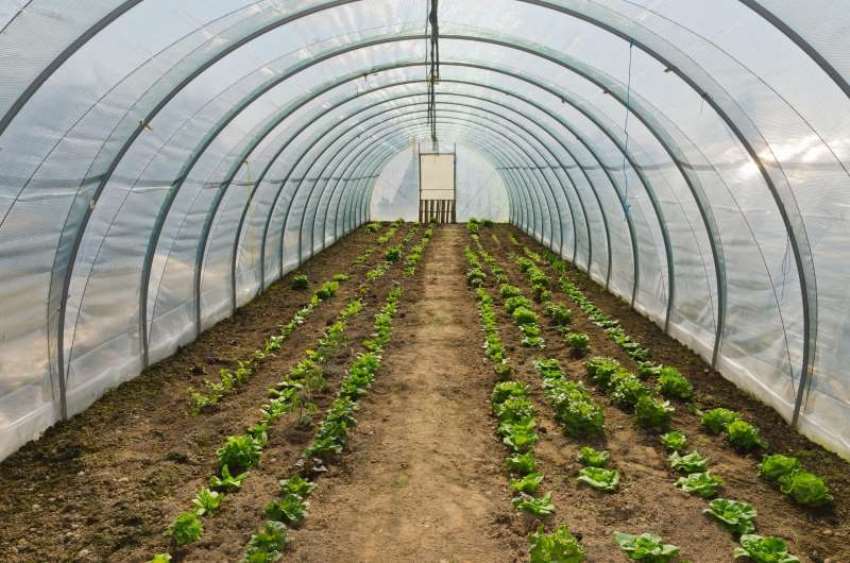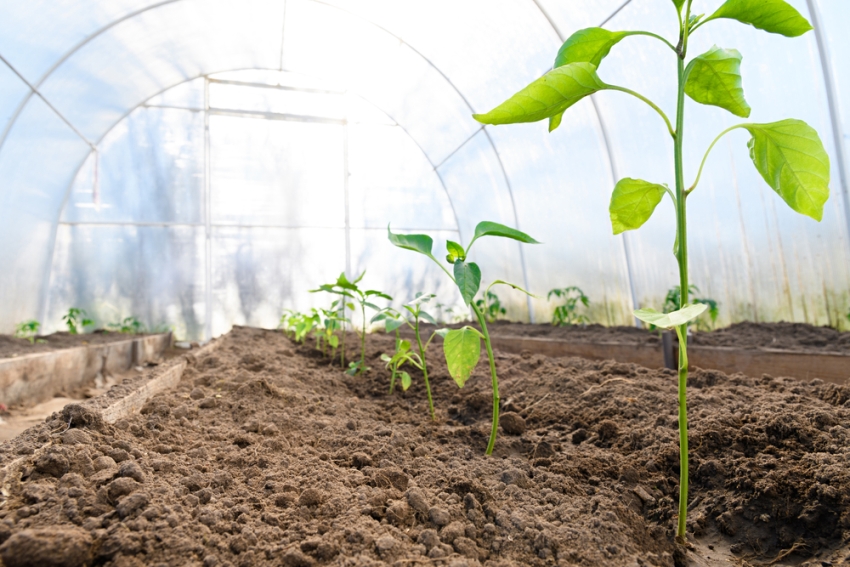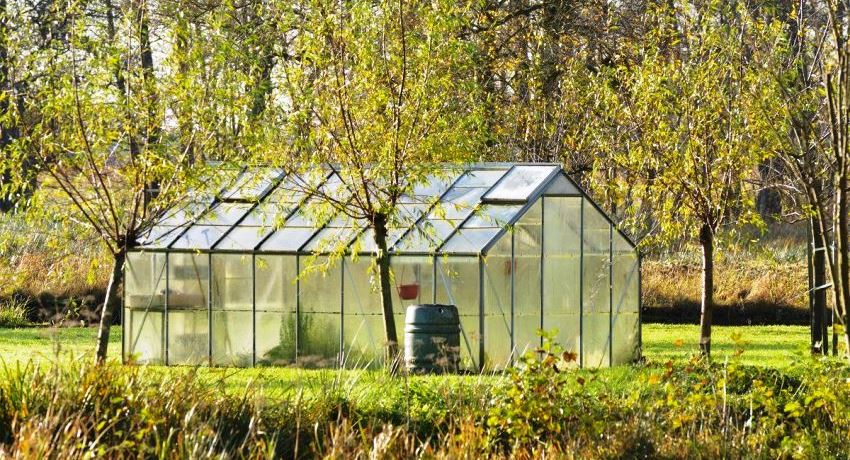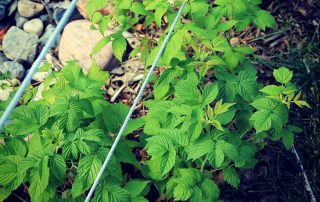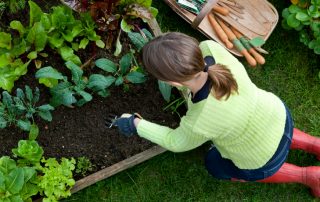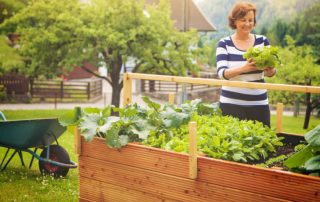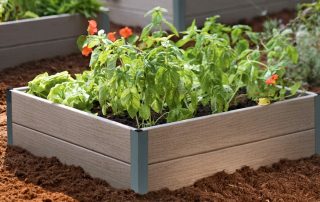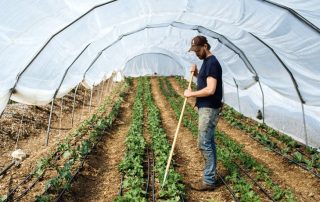Covering material for greenhouses and greenhouses is a modern way to protect plants from pests, active sun and adverse weather conditions. It not only possesses protective properties, but also helps to create an optimal climate for a good harvest. There are several types of covering materials on the market, each of which has its own advantages and characteristics.
Content
Covering material for greenhouses and greenhouses: characteristics, types and application features
As farmers and hobbyists alike know, planting indoors allows crops that are not always adapted to the local climate. Greenhouses and greenhouses of different designs are commonplace in fields and summer cottages. However, their effectiveness can become much higher if you use a modern covering material - agrofibre.
This non-woven synthetic material has the following features:
- perfectly permeates moisture, however, it has almost zero hygroscopicity;
- environmentally friendly material, harmless to plants and humans;
- protects plants from UV radiation;
- protects against excessive rainfall and extreme weather conditions such as hail or hurricane winds;
- serves as protection against pests and birds;
- retains heat inside the structure in case of slight frosts on the ground and neutralizes day and night temperature drops;
- passes air without obstacles;
- does not contribute to the formation of condensation;
- easy to use and store;
- possesses strength and abrasion resistance;
- does not rot or mold during operation;
- service life - several years.
Note! Non-woven covering material is environmentally friendly. It consists of polypropylene fibers that are glued together under the influence of high temperatures.
The combination of these properties allows you to increase crop yields by 20% due to the correctly selected covering material.Its price is comparable to the cost of plastic wrap, which will be a pleasant surprise for many gardeners. At the same time, if we take into account the excellent characteristics and long service life of the nonwoven, then its acquisition is more profitable. For example, tomatoes under cover material can grow to full maturity in the open field, while the film cannot guarantee a successful result.
Types of agrofibre greenhouse cover
In specialized stores and on the Internet, you can find a wide range of covering material for greenhouses and greenhouses. Its price fluctuates within various limits and depends mainly on the manufacturer, application features, density and packaging method (rolls or cut sheets).
For all types of covering materials of any manufacturer, color classification is characteristic:
- white covering material has different densities and is used to cover plants, form greenhouses and greenhouses;
- black is a covering material for weeds, it is always very dense and is laid only on the ground for mulching.
Important! Black and white covering materials are not interchangeable. Use each of them for their intended purpose: white - top, black - bottom.
The density of the cover sheet is the next defining sorting parameter. To make it easier for the consumer to navigate the modifications, manufacturers indicate the density level in the name of the product. For example, Agrotex 30 has a density of 30 g / m², and Agrotex 60 - respectively 60 g / m². The higher the number after the name, the higher the density of the material.
The density value directly affects the use of agrofibre and its cost. With the same size of the canvas, the price of a covering material for a greenhouse or greenhouse will always be higher for products with a higher level of density than the cost of a similar thin material, for example, for frameless cover of crops.
The most popular representatives of non-woven agrofibre on the domestic market are:
- "Agrospan": manufacturer Russia, available in 7 density options and in two colors (black, white), UV stabilizer.
- "Agrotex": manufacturer Russia, produced in 5 density options, there are additional 5 color solutions, in addition to traditional white and black versions, UV stabilizer.
- "Lutrasil": made in Germany, produced in 5 density options, has two colors (black, white), the name of the company can be used as a common name for all types of agricultural fabrics. The widest canvas of all types of material - up to 16.9 m.
- Agril: made in France, has four density options, UV stabilizer, 2 colors - black and white.
Let's take a closer look at what each of these materials is, and get acquainted with their practical application for growing garden crops.
Protective properties and marking of covering material "Agrospan"
"Agrospan" is the most durable in use among all covering cloths: its service life is up to 5 years. However, this is not its only advantage. Agrospan allows:
- protect grown plants from diseases, pests, UV radiation, hail, acid rain and pesticides;
- prevent the death of plantings from frost (it is guaranteed to protect plants at temperatures up to -4 ° C, but it is able to retain properties up to -7 ° C);
- stabilize the level of moisture in the soil, thereby reducing the abundance of irrigation;
- optimize the air exchange mode in a closed area;
- reduce the range of temperature drops during the day and at night;
- reduce labor costs for growing crops by 5 times;
- increase yields by 20%.
The form of release of the material - pieces of cloth 10 m long of various widths and densities. Color - black or white (depending on the purpose).
Note! "Agrospan" creates an optimal microclimate, therefore a greenhouse or greenhouse does not need mandatory ventilation.
Agrospan labeling and its purpose:
| Name | Colour | Appointment | Season of use |
| Agrospan 17 | white | shelter of crops and seedlings in a frameless way, protection from diseases and pests, protection from UV radiation | spring - autumn |
| Agrospan 30 | frameless shelter or tension on a light tunnel-type frame, protection against diseases and pests, light protection against frost, winter shelters for perennial plants | all year round | |
| Agrospan 42 | frame shelter, protection against gusts of wind and hail, protection against frost down to -2 ° С, winter shelters for perennial plants | all year round | |
| Agrospan 60 Agrospan 90 Agrospan 110 |
covering material for greenhouses and greenhouses of various designs, protection against gusts of wind and hail, protection against frost down to -4 ° С, winter shelters for perennial plants | all year round | |
| Agrospan 60 Agrospan 80 |
the black | mulching, ground weed film | spring - autumn |
The range of colors and possibilities of the covering material "Agrotex"
The main characteristics of the Agrotex fiber are plant protection, which is inherent in all types of nonwoven covering materials, plus excellent performance in maintaining the microclimate at subzero temperatures.
The advantages of the material include:
- lightness of the canvas;
- high thermal protection properties;
- resistance to creasing, decay, wear;
- resistance to adverse weather conditions;
- good light transmittance - up to 90%;
- promotes the penetration of water and air, and repels dust;
- does not form condensation inside;
- has a high breaking load, which allows the material to be used without loss of properties for several seasons;
- availability in the assortment of a wide canvas with reinforced edges.
Release form:
- bags with classic material for a summer cottage 1.6 m wide in white and black;
- rolls with a classic farm cloth 1.6-1.9 m wide in white and black with reinforced edges;
- bags and rolls with reinforced and reinforced-laminated material 1.6 or 3 m wide.
Agrotex labeling and its purpose:
| Name | Colour | Appointment | Season of use |
| Agrotex 17 UV | white | shelter of crops and seedlings in a frameless way, protection against diseases and pests, light protection against frost down to -2 ° С, protection against UV radiation | spring - autumn |
| Agrotex 30 UV | frameless shelter, protection against diseases and pests, frost protection down to -6 ° C, winter shelters for perennial plants, protection against UV radiation | spring - autumn | |
| Agrotex 42 UV | frame shelter with arcs, protection against gusts of wind and hail, protection against frost down to -7 ° С, winter shelters for perennial plants, protection against UV radiation | all year round | |
| Agrotex 60 UV | material for greenhouses and greenhouses of various designs, protection against gusts of wind and hail, protection against frost down to -9 ° С, winter shelters for perennial plants, protection against UV radiation | all year round | |
| Agrotex 60 UV Agrotex mulch 60-80 UV |
the black | mulching, UV protection, ground weed film | spring - autumn |
Note!All manufactured modifications of the Agrotex cloth contain a UV filter. It is labeled UV.
In addition to the classic color solutions, Agrotex is produced in two-layer color versions, the properties of which have been significantly improved. Greenhouses and greenhouses under such material increase productivity and reduce the ripening time of fruits.
Characteristics of two-layer canvases "Agrotex":
| Colour | Appointment | Top layer properties | Bottom layer properties |
| Red yellow | from frost and pests | top layer - red, accelerates flowering, increases productivity, keeps warm at night | bottom layer - yellow, actively fights pests without chemicals |
| White-red | frost protection + growth rate | top layer - white, protects against overheating and excessive UV radiation | the bottom layer is red, protects from frost down to -9 ° C, keeps warm well, increases growth, accelerates flowering, increases productivity |
| White-silver foil | extra light and warmth | top layer and base - white, have all the properties of the classic "Agrotex" for greenhouses and greenhouses | inner silvery stripes additionally direct light towards the plants, compensating for its deficiency, accelerate photosynthesis, and increase productivity |
| White reinforced | for greenhouses | reinforcement increases the wear resistance of the material, resistance to deformation and extreme weather conditions, while maintaining air permeability | |
| White reinforced laminated | for greenhouses | the top layer is laminated, i.e. possesses the properties of a plastic film not to pass water | inner - white reinforced, increases wear resistance, eliminates the "lens effect" from the top layer, prevents condensation |
Application of the covering material "Lutrasil" at the summer cottage
"Lutrasil" is the lightest of the covering materials considered in this article, however, despite this property, it is able to protect plants from hail and frost. At the summer cottage, it is used to shelter seedlings from pests and bad weather, as well as to protect perennial plants in winter, for mulching and weed control. It simplifies plant maintenance and increases crop yields.
Main characteristics of Lutrasil agrofibre:
- excellent light transmittance - up to 92%;
- water permeable: you can water directly on top of the canvas without opening it;
- breathable and does not create a greenhouse effect;
- protects plants from frost down to -6 ° С;
- not afraid of frost, so in winter it can be stored anywhere;
- good indicators of wear resistance: it serves for 3 seasons without deterioration in characteristics and appearance, however, it can be used longer - up to 6 years;
- convenient to use: can be rolled up, sewn, easily unfolds;
- good tensile strength.
Material release form - rolls 1.6 and 7 m wide. Color - black or white (depending on the purpose).
Lutrasil marking and its purpose:
| Name | Colour | Appointment | Season of use |
| Thermoselect 17 | white | shelter of crops and seedlings in a frameless way, protection from pests, easy protection from frost down to -2 ° С | spring - autumn |
| Termoselect 23 | frameless shelter, pest protection, frost protection down to -3 ° C, winter shelters for perennial plants | all year round | |
| Frostselect 30 | light frame shelter, protection against gusts of wind and hail, protection against frost down to -6 ° С, winter shelters for perennial plants, protection against UV radiation | all year round | |
| Frostselect 42 | for greenhouses and greenhouses, protection against gusts of wind and hail, protection against frost down to -6 ° С, winter shelters for perennial plants, protection against UV radiation | all year round | |
| Frostselect 60 UV | the black | mulching, UV protection, ground weed film | spring - autumn |
Note! All manufactured modifications of the Lutrasil cloth are capable of protecting plants from frost.
Using covering material "Agril"
Agril is a thin non-woven covering material that is used to protect plants in horticulture and horticulture from temperature extremes, frost, dew, fog, wind, diseases and pests. It transmits light (80%), water and air.It copes well with maintaining the microclimate inside the shelter during temperature drops during the day and at night, and also protects from frost down to -7 ° C. Promotes rapid seed germination and accelerates fruit ripening.
Related article:
Greenhouse Bread box: functional design for growing vegetables
Principle of operation, advantages and disadvantages of the design. How to make and sheathe a frame with your own hands. Prices and features of finished structures.
The form of material release - packages and rolls of various widths and winding lengths. Color - black or white (depending on the purpose).
Characteristics of the covering material "Agril":
| Name | Colour | Appointment | Season of use |
| Agryl 17 | white | fastened in a frameless way, protection against pests, protection against UV radiation, light protection against frost down to -2 ° С | spring - autumn |
| Agryl 23 | frameless shelter, pest protection, frost protection down to -3 ° C, UV protection, winter shelters for perennial plants | all year round | |
| Agryl 30 | light frame shelter, protection against gusts of wind and hail, protection against frost down to -5 ° С, winter shelters for perennial plants, protection against UV radiation | all year round | |
| Agryl 50 | for greenhouses and greenhouses, protection against gusts of wind and hail, protection against frost down to -7 ° С, winter shelters for perennial plants, protection against UV radiation | all year round | |
| Agryl 50 | black, black and white | mulching, UV protection, ground weed film | spring - autumn |
How to choose a covering material for greenhouses or greenhouses
As the above characteristics of covering materials show, they have many common parameters. In deciding which covering material is better to choose, one should be guided not by the name and manufacturer of the canvas, but by its purpose. It is also worth considering climatic conditions, the duration of the warm period, the frequency of sudden frosts, wind, etc.
When using any type of agrofibre, first of all, you need to pay attention to its density and color. For frame structures, a white canvas is used. Some manufacturers have its modifications in terms of colors and strength enhancement - reinforcement. These preferences are highly individual.
The optimal density of the covering material is determined by the following parameters:
- planting time in the ground;
- height of growth of garden crops;
- climate conditions;
- the height and type of structure of the shelter being constructed.
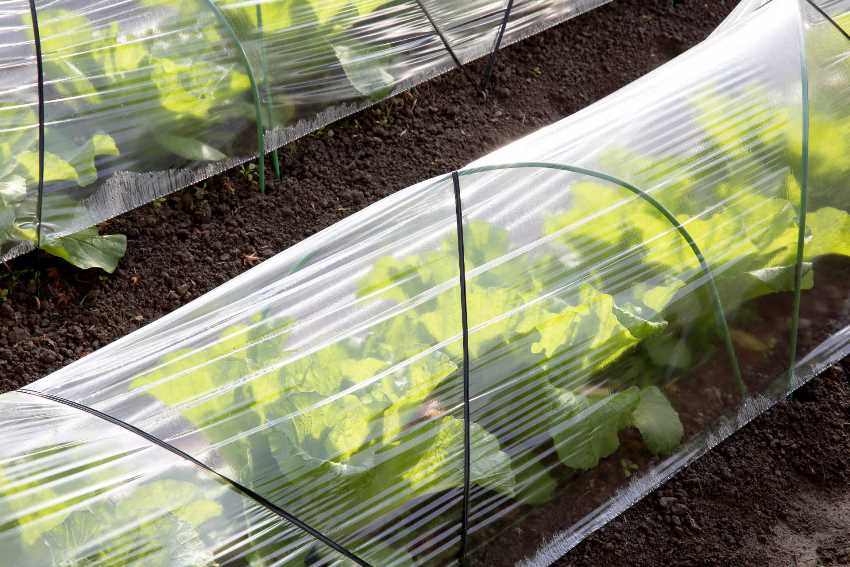
The density of the covering material depends on the height of the structure and the plants themselves
Which covering material is best for a greenhouse or greenhouse? First of all, one with a density of more than 30 g / m², as well as having a UV stabilizer. For greenhouse structures, the densest agrofibre is always chosen - 50 g / m² and above. For greenhouses of low arc structures, a canvas with a density marking of 30-40 will be enough.
The UV stabilizer affects the durability of the covering material and the preservation of its original properties over several seasons. It is impossible to visually determine the presence of a stabilizer in agrofibre, so it is worth purchasing products packaged in production that have the appropriate manufacturer's marking and protective signs.
Note! If you buy agrofibre in rolls, then you can save on the shelter of a greenhouse or greenhouse. The remaining unused part of the roll is stored for an unlimited amount of time.
How to use cover material for greenhouses and greenhouses
Non-woven covering material is very easy to maintain and easy to use. However, when using it for the first time, it is worth knowing several important aspects that will help preserve the properties of agrofibre, avoid financial losses and disappointments when growing garden crops.For example, it is necessary to consider which side to put the covering material on the greenhouse, whether it can be cleaned, what to do if the canvas was not enough to completely cover the structure, etc.
Let's dwell on the main aspects of using a covering canvas.
Methods for laying covering material for greenhouses
Agrofibre canvases are never cut prematurely. Initially, a frame or arcs are installed for a greenhouse, they begin to work with a covering material only after the implementation of this stage. The canvas is placed on top of the arcs, creating allowances on all sides of at least 20 cm, and cut off only after all the necessary measurements have been completed. The length of the canvas is calculated not from the edge of the first arc to the last, but taking into account the closed ends of the greenhouse. Working with nonwoven fabrics is similar to the process of covering arcs with film.
Covering material is available in different widths. However, it may happen that it is not possible to completely cover the entire greenhouse with one piece of agrofibre. In this case, the canvases are overlapped with each other, the joints are glued with an adhesive thermal gun or sewn with a thread. A sewing machine can be used.
Before finally fixing the canvas on the arcs, it is worth finding out which side to cover. Covering material for a greenhouse has different properties of the upper and lower layers. This must be taken into account. It is easier when the material is two-colored: the manufacturer indicates on the package how to distinguish between the top and bottom sides. If the canvas is white, then it is determined visually and by touch: the smooth side is laid down, the "rough" side with holes - up.
You can check on a new cut from the package in which direction the canvas passes water. When buying a roll cover, you need to know that the material is wound with the top layer outward. With a completely homogeneous material (on both sides), it makes no difference which side to lay it on.
How and how to fix the covering material
When the agrofibre is successfully laid on the arcs, it remains to securely fix it. You can fix the covering material on the arcs of the greenhouse with both specialized materials and improvised means. The garden supply store sells special plastic clips or clamps for fixing: they are suitable for both film and agrofibre. Knowing the diameter of the arcs, you can choose the right size.
If the farm has an old hose, then it is cut into pieces, cut them lengthwise and put on as a clamp on an arc with a covering material. However, if the hose is not rigid enough, then in strong gusts of wind, the coating will fly off. Therefore, it is better to replace the hose with a plastic pipe, with which a segment corresponding to approximately ¼ of the diameter is cut along the length. It is recommended to sand the sharp edges of the pipe sections with sandpaper.
Some gardeners use regular large office binders to fix agrofibre. Such fastening requires additional spacer, for example, a piece of fabric, so that the web does not break over time.
The bottom of the covering material on the greenhouse is fixed with special pegs or pressed against bricks, wooden beams and other weighting materials.
Note! When installing the mounts, it is worth considering that for plants that need pollination, it should be possible to open the greenhouse when they bloom.
The non-woven cover material allows you to sew a real greenhouse cover. Knowing the step of installing the supports, transverse "pockets" are sewn onto the canvas, into which arcs are then inserted. In this case, the installation of a greenhouse involves a change in the order of installation of the structure.
How to clean and where to store the covering material
The service life of agrofibre always corresponds to the expiration date specified by the manufacturer. Material can last much longer if treated with care. After removing from the greenhouse, the canvas should be dried, folded and stored in a dry, dark place. The most dense frost-resistant covering materials can remain on the site all year round.
If the covering product gets dirty during use, it is recommended to clean it with a sponge or soft brush. In case of heavy dirt, the cloth can be washed with soap or powder.
Any amateur gardener or farmer wants to get high yields every year, while spending a minimum of effort on caring for the plants. The use of non-woven covering material is the right step towards achieving this task.
